Average sizes and life expectancy for this breed:
Dachshunds are well-known scent hound dogs. They were originally bred to track and hunt badgers and other tunnelling animals, including foxes and rabbits. Hunters even utilized packs of Dachshunds to run after wild boar. However, today, their adaptability and flexibility have made them popular family dogs, show dogs, and small-game hunters. In fact, they have been ranked one of the top most popular breeds since the 1950s.
Dachshunds come in three distinct coat types; long-haired, wire-haired, and smooth-coated.
As the confident Dachshund walks by, you can’t help but smile at their charming (and slightly comical) appearance. Alongside their active characters, their appearance has inspired many loving nicknames over the years, such as hot dog, sausage dog, wiener dog, Dashie, Doxie, and many others.
They have also been a favourite muse of cartoonists and toymakers. However, their unusual looks and short legs have a purpose. They helped these dogs to dig and manoeuver through tunnels and small corners with ease. They may be small, but Dachshunds are brave.
At home, a Dachshund’s playful personality really shows. They love to be close to their human companions and enjoy "assisting" in everyday tasks. Because of their intelligence, they often have their own ideas about playtime rules and they adore running after other small animals, toys, and birds.
The dog breed standard possibly defines their personality best:
"The Dachshund is smart, active, and bold to the point of recklessness, persevering in above and below groundwork, with all the senses well-developed. Any display of shyness is a serious fault."
See available puppies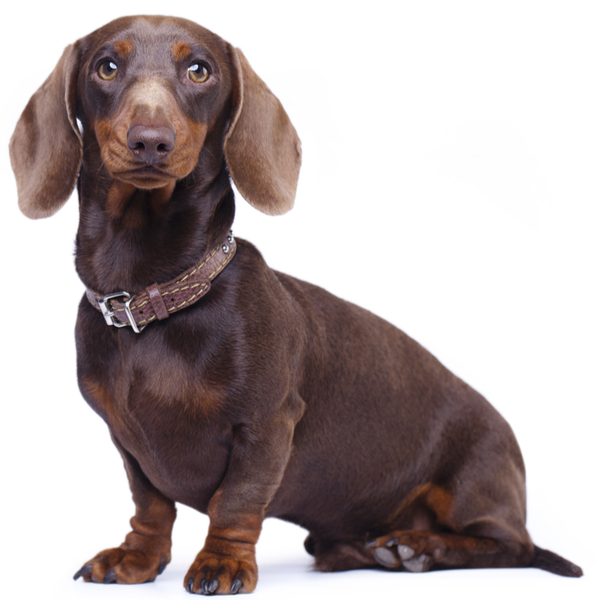

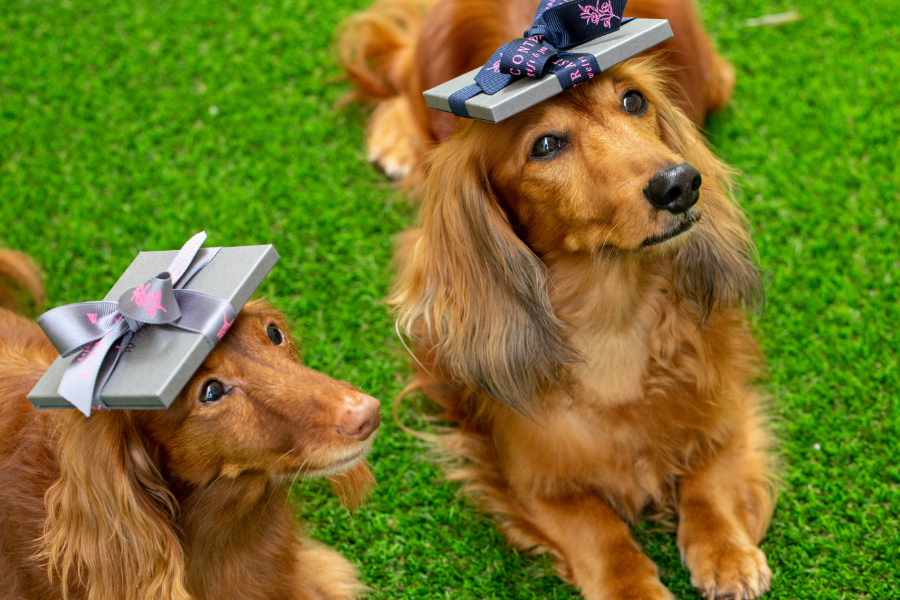


The Dachshund was bred in the 17th Century in Germany to hunt and track badgers. The word "Dach" translates to badger, and "Hund" means dog. This dog breed has three varieties; smooth-coated, wire-haired, and long-haired, which all appeared at different times. The smooth-coated Dachshund is believed to be the original variety. However, their origin is a bit obscured, with many possible ancestors including pointers and terriers. Another story claims that the Dachshund developed from dwarf mutations of taller hunting hounds such as the Bibarhund and the Bloodhound. Long-haired Dachshunds were developed by breeding smooth-coated Dachshunds of varying coat lengths. The wire-haired Dachshund arrived on the scene much later, in the 1800s by adding rough-coated terriers to the mix. All three coat varieties can be found in both the standard and miniature versions of this breed.
Dachshunds have short, strong legs and paddle-shaped paws that allowed them to dig out prey and gain access to small fox and rabbit holes. Larger versions of this dog breed were utilized for hunting deer or foxes, while the smaller Dachshunds were bred for hunting ferrets and hares.
Dachshunds were first introduced in England in 1840 when the Royal family brought them back to hunt pheasants. Queen Victoria became a huge fan of the breed which helped their popularity to grow.
A few decades later, in 1880, Dachshunds were introduced to America. However, they lost their popularity during the first and second world wars in both the UK and the US due to their connection to Germany. During this time, anyone who owned a Dachshund was considered to be a ‘sympathiser’ and some were even attacked. As a result, their name wes changed to Liberty Hounds in the US to try to reduce their association with Germany.
Today, Dachshunds are incredibly popular with hunters and families alike. Both the miniature and standard varieties are registered in the US and England. In Europe, there is also a rabbit (Kaninchen) size. The UK Dachshund Club was founded in 1881.
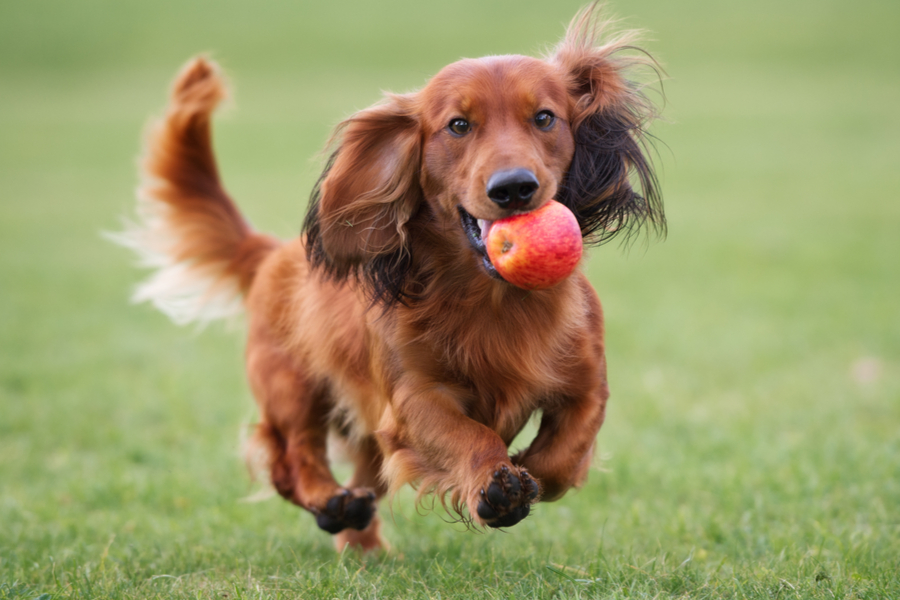
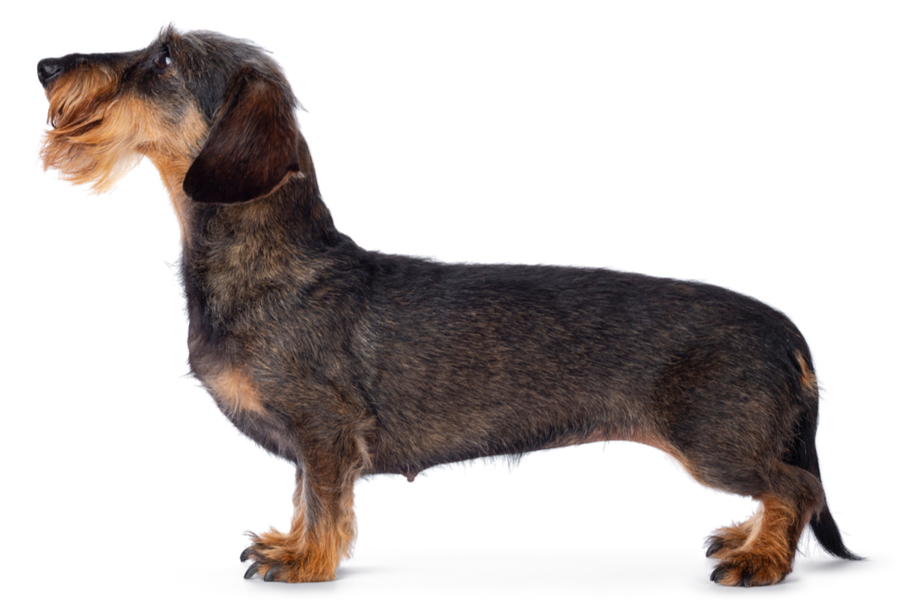
Dachshunds have long bodies that are held low to the ground, with short, powerful legs and large paddle-like feet. They have long, pointed muzzles, almond-shaped eyes, and floppy ears. Dachshunds are large-chested dogs with big, full barks that were intended to be heard by hunters as they burrowed after prey. Their tails extend out from the spine and arch upwards slightly. According to their breed standard, the tail should not be kinked or touch the ground when at rest.
Long-haired Dachshunds have sleek, wavy coats that need more regular brushing than their smooth-coated counterparts, especially around their ears and elbows. Coat colours can be solid, usually red or cream, or two-toned, with black and tan being the most common colour combination. Smooth-coated dogs, or short-haired Dachshunds, have shiny, sleek coats that are easy to groom and maintain.
The wire-haired coated Dachshunds are double-coated Dachshunds with a short, coarser topcoat and a sleek, smooth undercoat. Wild Boar is an uncommon coat colour in Dachshunds and is only found in the wire-haired variety. This coat variation is characterised by agouti hairs with several different colours on each individual strand, which can include light tan, reddish-brown, and black. Wire-haired Dachshunds can also come in a variety of other coat colours which are identical to the smooth-coated Dachshund, including black and tan, and various shades of red.
Dachshunds are intelligent, lively, and brave to the point of recklessness. They were originally bred to be tenacious and determined, which is another way of saying they are fairly stubborn!
Dachshunds are known for being entertaining and courageous. However, when they are not dashing down holes, they love to snuggle up with their human companion. For many Dachshund dog lovers, this particular characteristic outshines their stubborn desire to always get their own way.
A Dachshund’s personality can vary with coat type. For example, wire-haired Dachshunds have terrier blood in their ancestry so they can be a bit mischievous and clownish. Longhair Dachshunds are generally calmer and more gentle. Smooth-coated Dachshunds have a personality that lies somewhere between the two. However, all varieties are known to be fiercely protective and loyal to their owners.
Dachshunds are an excellent choice for apartment living and for those who do not have a backyard in their homes. They are also popular with city dwellers because of their small size. Dachshunds are commonly energetic indoors and adore going for walks to stretch those little legs.
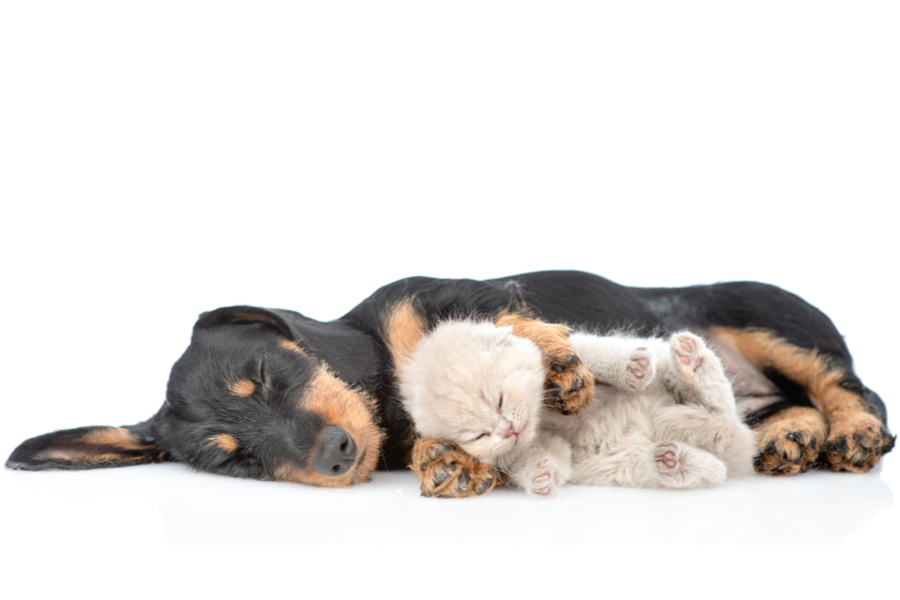
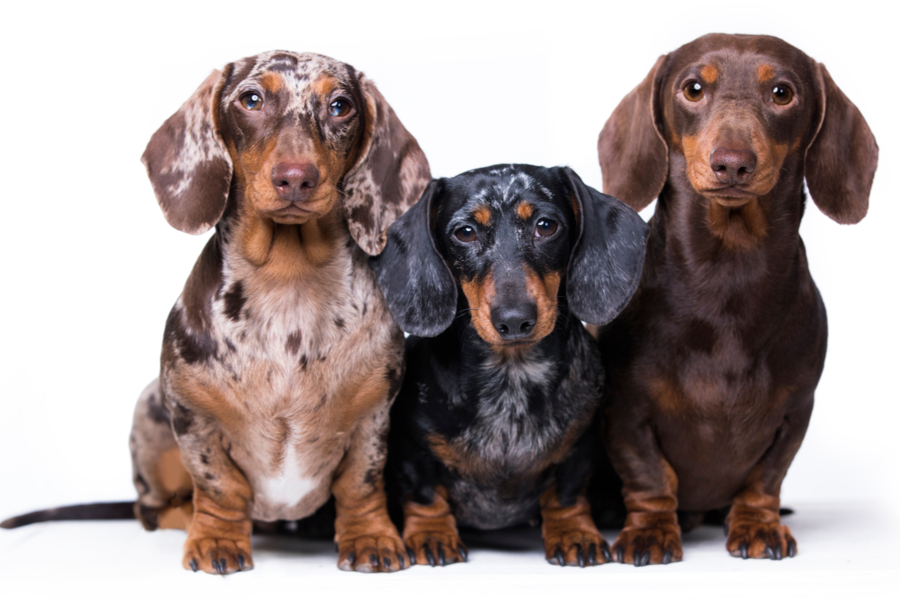
Dachshunds are very bright. However, they also thrive on their own independence which can make them stubborn at times. So, they can be challenging to train. Saying that, they adore giving and receiving affection and do best with positive, reward-based training. Dachshunds are complex and will not answer well to rough commands or discipline. Patience and consistency are key to successfully training a Dachshund puppy.
Dachshunds have a superb sense of smell and a strong prey drive. This is because they were bred to remain focused and track a trail without disruption. So, in situations where they are already busy with something, they may not always listen to you.
Never shout at your Dachshund because this will likely cause confusion and may even scare them. This could result in anxiety, frustration, or aggressive behaviours in the long run. For this reason, it’s crucial that you build up a positive bond with your dog to build their confidence.
When you start training your Dachshund puppy, it’s best to do it in a quiet room with no distractions. This way, your dog’s attention should only be focused on you. After your dog has mastered the basics, you can then move into other parts of your house like your garden, and continue your training there. In time, you will be able to visit a local doggy park to allow your pup to interact with other dogs.
Dachshunds are classed as moderate shedders. Smooth-coated Dachshunds require little more than a wipe with a towel or hound glove to keep their coats in good condition. Long-haired Dachshunds need more regular brushing, depending on the thickness of the coat.
The wire-haired Dachshund’s coat can be plucked or hand-stripped several times a year to remove any dead hair and to prevent matting. Beyond that, you will need to occasional trim the beard and comb through their coat once or twice a week.
Brush your Dachshund’s teeth at least two or three times a week to remove tartar buildup. However, daily brushing is recommended to prevent tooth and gum diseases, as well as bad breath.
Trim their nails monthly or as needed. In addition, you should examine their ears at least once a week for dirt, inflammation, or a foul odour that could indicate an infection. Wipe them out weekly with a moistened cotton ball with gentle, pH-balanced ear cleaner to avoid ear infections.
As you groom your Dachshund, examine their body for rashes, sores, or any signs of infection such as redness, tenderness, or inflammation on the skin, eyes, nose, mouth, and feet. Their eyes should be healthy and clear, with no discharge or inflammation. A meticulous weekly examination of your dog will help you to spot any potential health issues early.
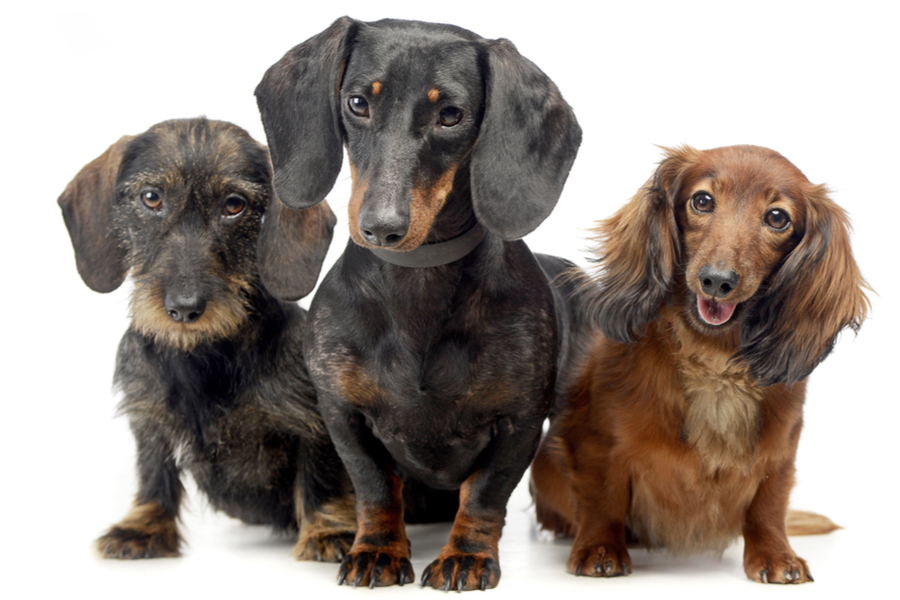
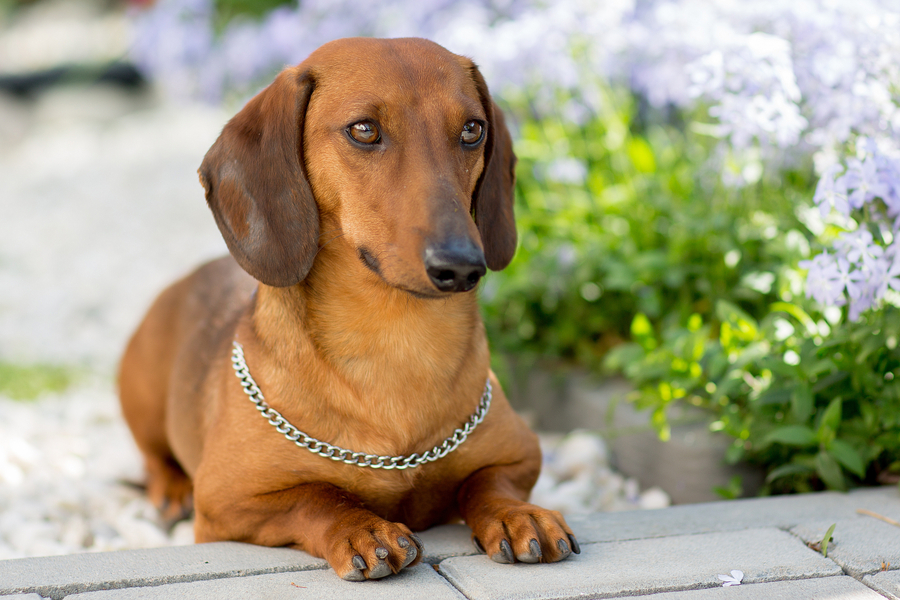
Dachshunds are typically a healthy dog breed. However, you should always make sure you purchase any puppy (regardless of breed) from a reputable and registered breeder. Not only will they ensure that your puppy is well socialised and cared for, but they will also be able to check for any health issues.
One of the most common injuries that Dachshunds experience is disc damage due to their long backs. So, you must monitor their weight because overweight Dachshunds are more susceptible. Dachshunds should also get their ears checked regularly for ear infections because of their naturally drooping ears which can harbour bacteria.
Below are some of the more common health conditions that affect Dachshunds:
• Progressive retinal atrophy (PRA) – A degenerative eye disorder that ultimately causes blindness from the loss of photoreceptors at the back of the eyes.
• Intervertebral Disc Disease (IVDD) – One of the most common health conditions found in Dachshunds because of their elongated backs. This can be a hereditary condition but it can also be caused by dropping or jumping on or off furniture.
• Gastric dilatation-volvulus (GDV) – Also known as Bloat. This can be a life-threatening condition that occurs when the stomach fills with air or gas and then twists on itself. GDV often affects large dog breeds with deep chests, but Dachshunds are also susceptible due to their large chests.
• Epilepsy – Dachshund dogs are prone to idiopathic seizures, which means they have no known cause. In affected dogs, they usually occur before the animal is two years old, however, they can also suddenly show up in dogs that are 5-6 years old. If your Dachshund is experiencing seizures, you should take them to the vet to ensure you find the best treatment.
• Cushing’s Disease (Hyperadrenocorticism) – A condition that occurs when the body produces too much cortisol hormone. It can develop as the result of an imbalance in the adrenal gland or a tumor on the pituitary gland.
• Canine Diabetes Mellitus (DM) – This health condition is occasionally seen in Dachshunds, especially if they are overweight. It can be treated with a proper diet and daily insulin injections.
Dachshunds are generally good with children in their own families if they are introduced from a young age. However, they may not be as accommodating to your children's friends, so make sure to supervise all interactions.
Dachshunds can easily be injured if they are not handled properly. So, it’s best to only allow young kids to hold or pet your Dachshund when they are sitting on the floor. Make sure you properly explain to your children how to correctly handle and touch dogs like Dachshunds and supervise all interactions.
Dachshunds generally get along well with other dogs and even cats. However, you may find that your Dachshund will always want to be top dog!
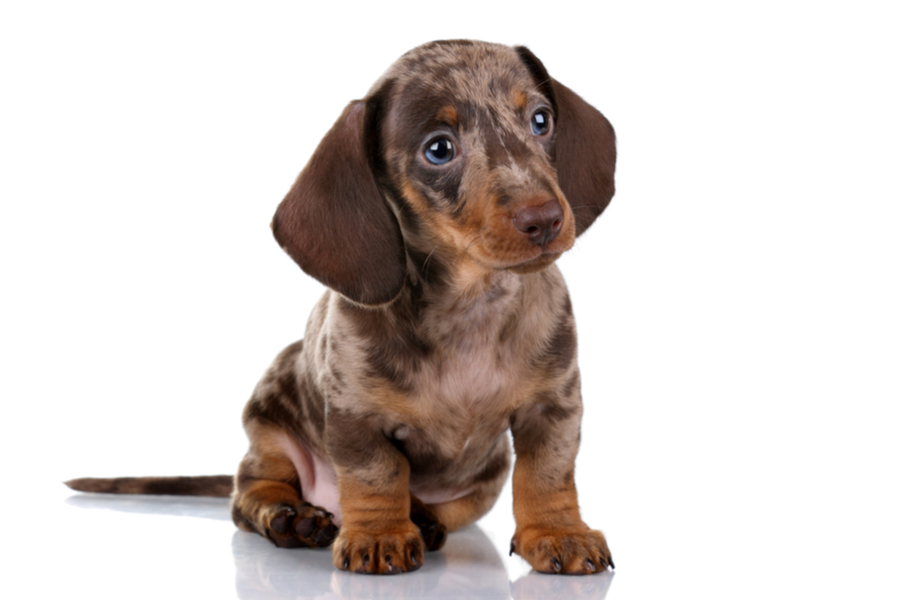

We can connect you with Breeders that are specialized in this particular breed.
See available puppies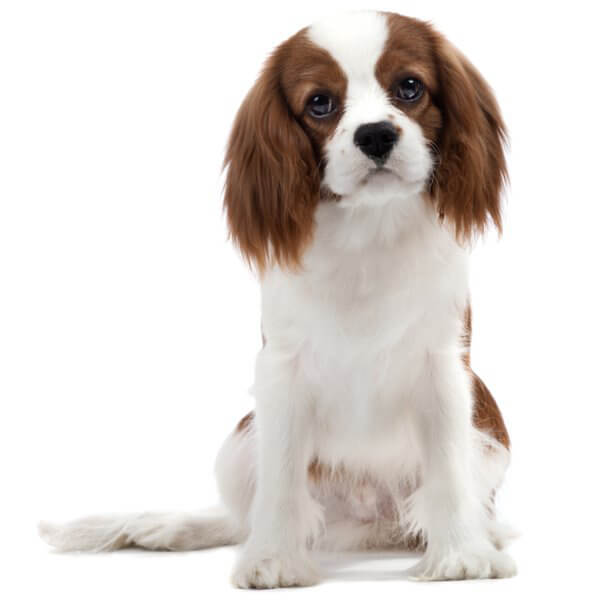
United Kingdom
Size : Small
Coat : Long
Registration : KC, FCI, AKC
Exercise : 1 hour
Training : Easy
Grooming : Twice a Week
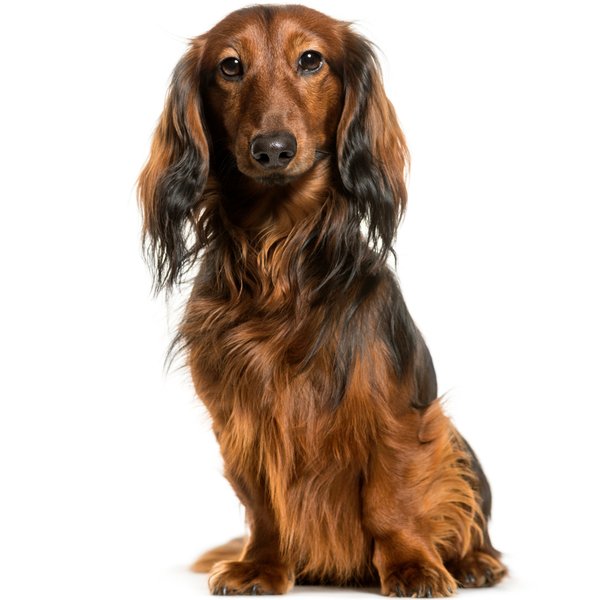
Germany
Size : Small
Coat : Short
Registration : KC, FCI, AKC
Exercise : 30 minutes
Training : Medium
Grooming : Twice a Week
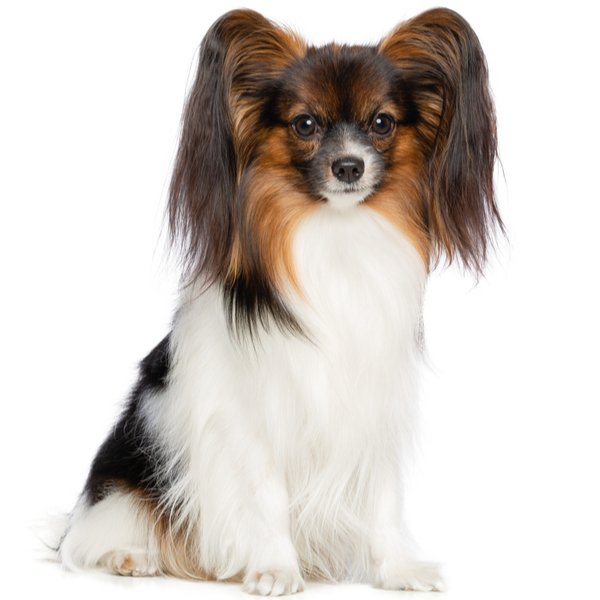
France
Size : Small
Coat : Long
Registration : KC, FCI, AKC
Exercise : 30 minutes
Training : Easy
Grooming : Once a Week
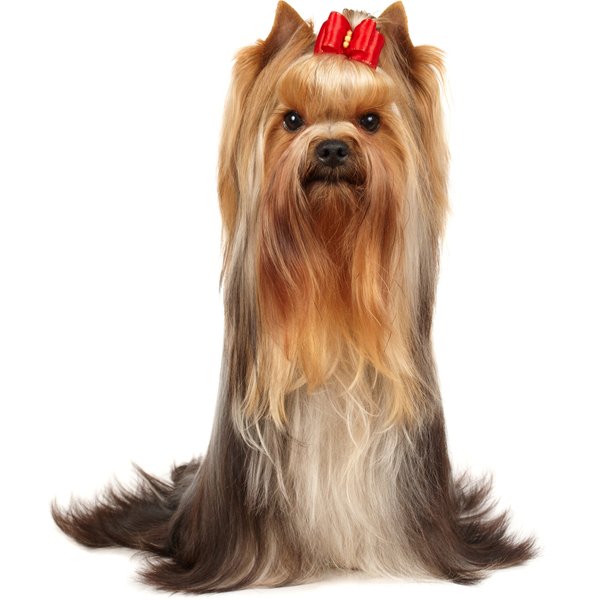
United Kingdom
Size : Small
Coat : Long
Registration : KC, FCI, AKC
Exercise : 30 minutes
Training : Easy
Grooming : Twice a Week


Need some advice?
Whether you're a first time pet owner, an experienced pet owner, a new or long-time breeder, or just curious about pets, we've got you covered!

January 17, 2024
What Is The Personality Of Russian Blue Cats?
Russian Blue cats are most known for their distinctive shimmery blue-silver coat and piercing green eyes. However, this breed’s calm and gentle temperament is what makes them shine the most in the feline world.

January 17, 2024
10 Facts About Russian Blue Cat Breed
Russian Blues are one of the most aesthetically stunning cat breeds, with a gorgeous plush silvery coat and vibrant green eyes. However, it’s not only their appearance that is beautiful; their nature is too.

January 17, 2024
How To Choose The Right Cat Breed for You
Cats can make the most fantastic animal companions; they are adorable, friendly, and loving. However, not all felines are created equal. There are many different breeds, of which each has its unique personality traits.
Need some help?
Contact us to speak to our friendly advisor, who will gladly help you find your dream pet!



We are registered in England and Wales under registration number 12568840,
and our registered office is at 58-60 Kensington Church Street, W8 4DB London, England.
© 2023 The Pedigree Paws